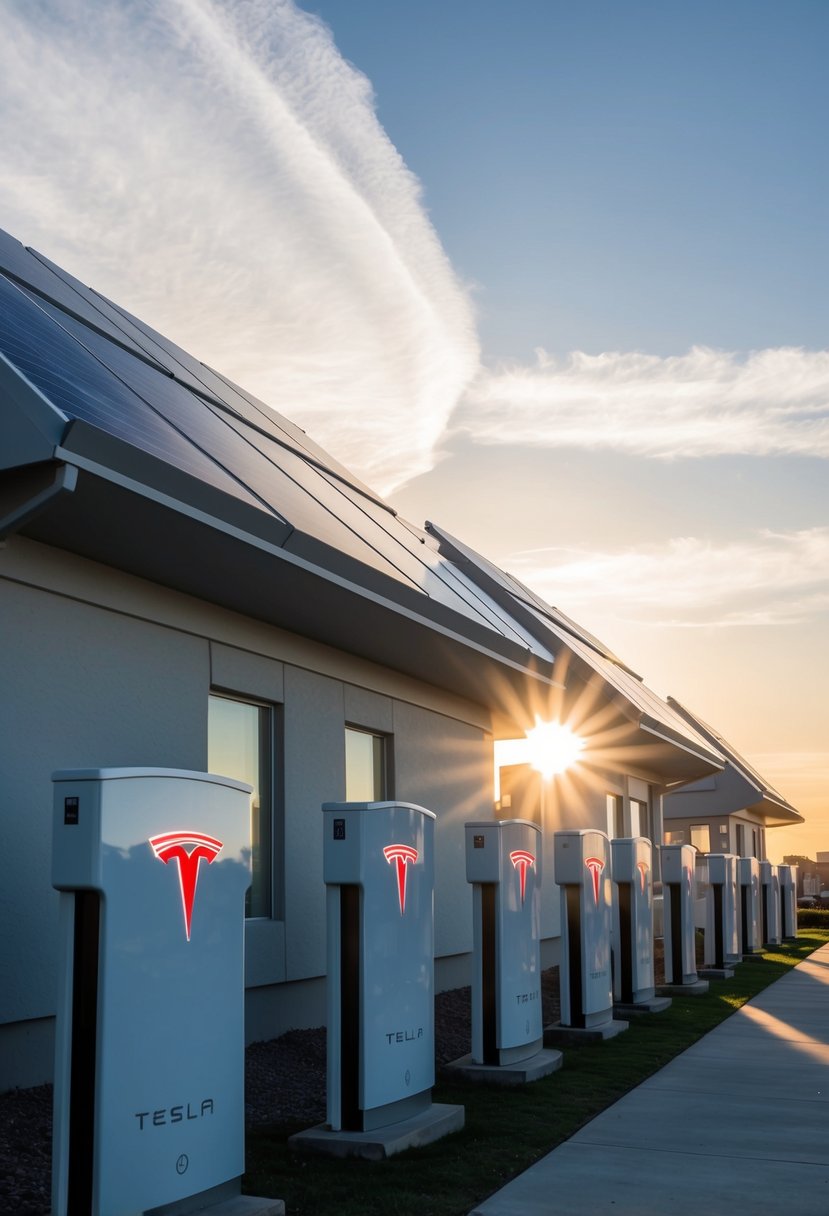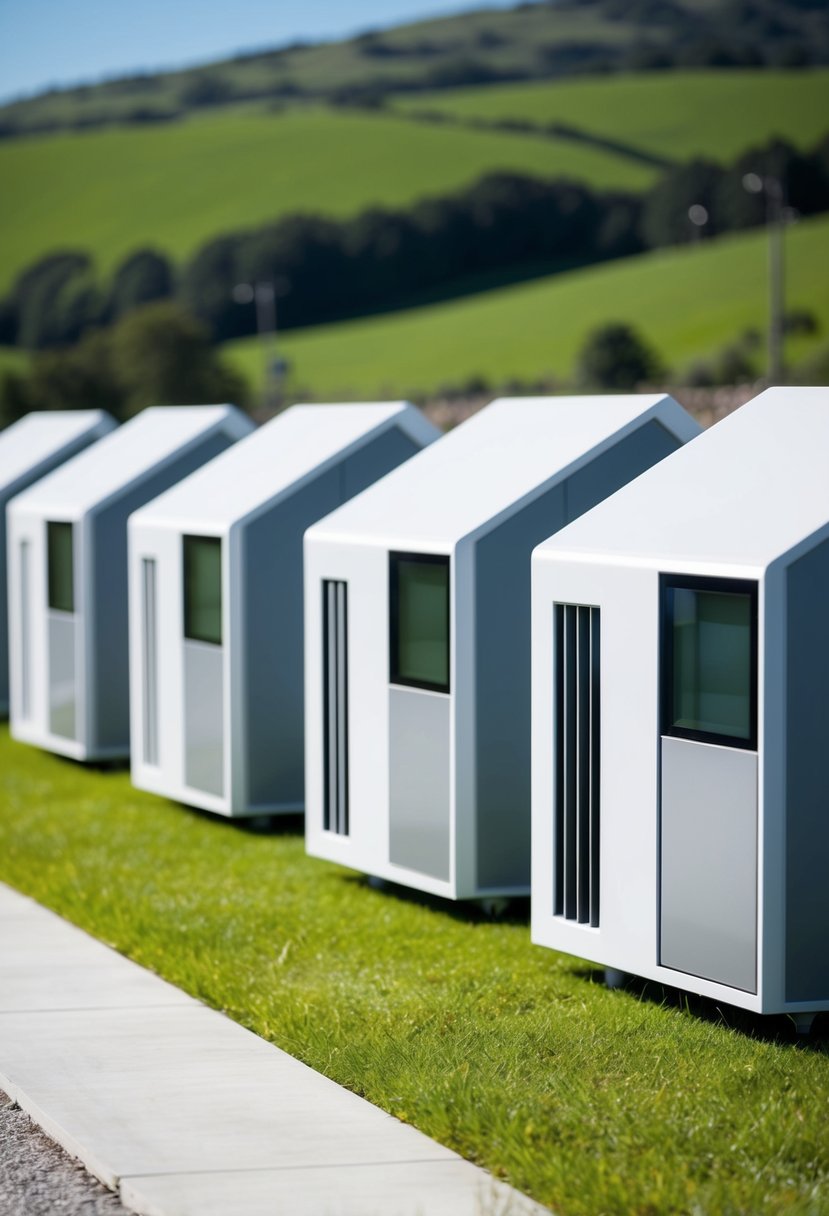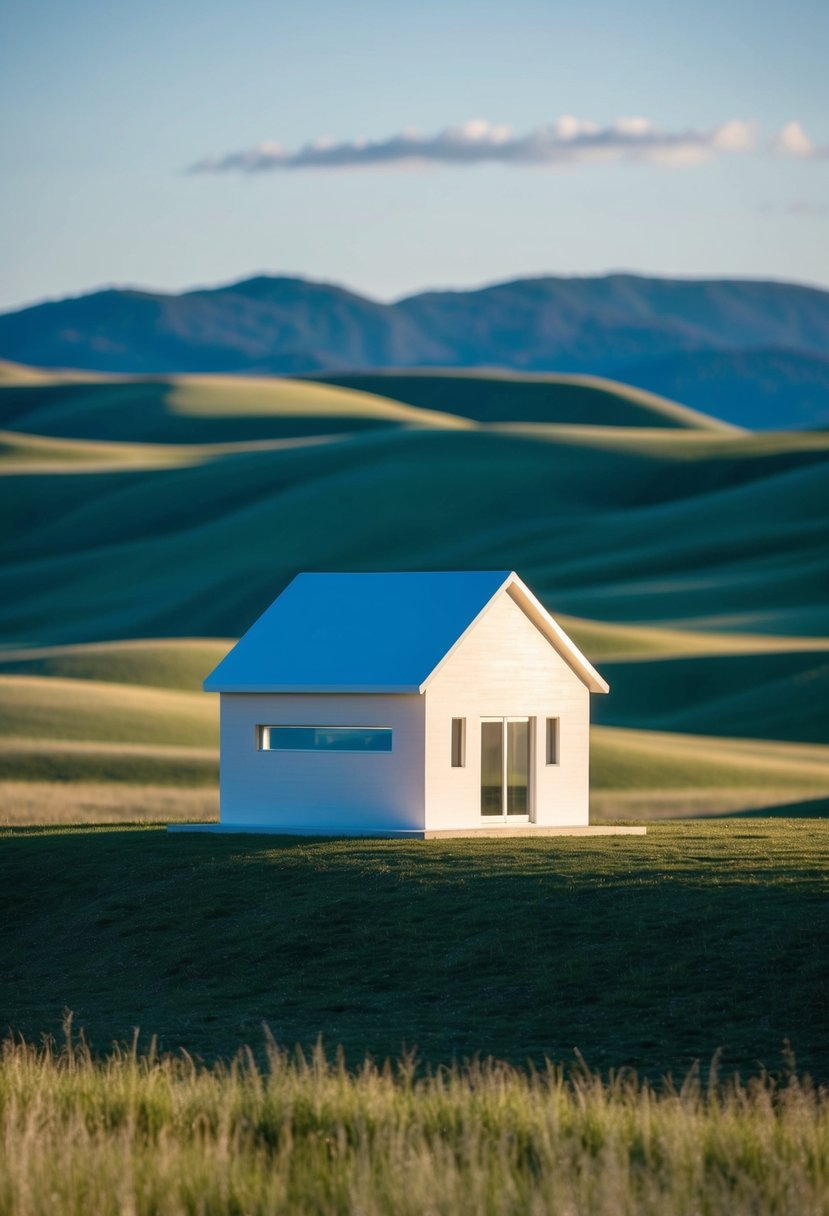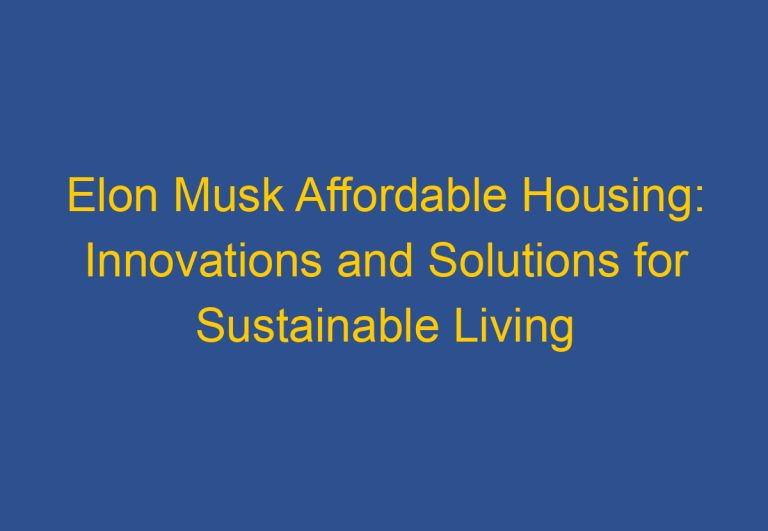Elon Musk 3D Printed House: Revolutionizing Affordable Housing Solutions
Elon Musk has long been a pioneer in technology and innovation, and now he is turning his attention to the world of housing. With the increasing need for sustainable and affordable living options, Musk’s involvement in 3D printed houses marks a significant step forward. These homes offer a glimpse into a future where housing can be created quickly and efficiently, making it more accessible to everyone.

3D printing technology allows for new designs and construction methods that traditional building practices cannot match. Musk’s vision includes homes that are both functional and environmentally friendly. This approach not only helps meet the growing demand for housing but also promotes sustainability—a key aspect of Musk’s overarching goals in various industries.
As the world faces housing shortages and rising costs, 3D-printed homes could be part of the solution. By exploring Elon Musk’s latest endeavors in this field, readers can discover how technology is reshaping where and how people will live in the future.
3D Printed Homes Will Be the Teslas of Housing, Says ICON CEO

In today’s housing market, shortages are a major challenge. Home prices are rising rapidly, leaving many looking for affordable options. Jason Ballard, the CEO of ICON, believes 3D printed homes could offer a solution.
He compares these homes to Teslas, stating that to succeed, they must not only be the best in their category but also stand out in the overall housing market. “If 3D printed homes are going to be mainstream,” he said, “they must be safe, stylish, and functional.”
Key Benefits of 3D Printed Homes:
- Cost-Effective: Designed to cut building costs significantly.
- Faster Construction: Homes can be built in half the usual time.
- Less Waste: The 3D printing process minimizes material waste.
Ballard wants to change how homes are built. He notes that construction quality has declined over the years, leading to what he calls “soul-less housing.” Many current homes look similar, lacking creativity and character.
3D printing allows for more innovative designs. Homes can be custom-built to meet specific needs and preferences. As ICON shifts to this technology, it aims to address the global housing crisis.
Ballard believes that with innovative methods, a significant change is possible in the housing industry. He insists that the goal is clear: 3D printed homes must set a new standard for living spaces today and in the future.
Image of Elon Musk 3D Printed House

Elon Musk has gained attention for living in a unique home that showcases modern housing solutions. His residence is a Boxabl Casita, a foldable, prefabricated house.
The design measures 20 feet by 20 feet and is highly portable. It can be set up quickly, offering a compact living space.
Features of the Boxabl Casita:
- Square Footage: 375 sq ft
- Rooms: Includes a kitchen, living area, and bathroom
- Cost: Approximately $50,000
Images of the Boxabl Casita reveal a simple yet functional layout. The interior is designed for efficiency, with smart storage options and open spaces.
The exterior is sleek, offering a modern aesthetic. This innovative structure aligns with Musk’s vision for affordable and sustainable living.
Musk’s use of potentially 3D printed elements in future designs could further redefine housing. This approach not only benefits individuals but also addresses broader housing issues.
Overall, the combination of advanced technology and minimalist design reflects a shift towards new building methods. The image of Musk’s home serves as a glimpse into a possible future for housing.
The World’s First 3D Printed Homes Powered By Tesla Solar And Powerwall Will Be Built In California

In California, a groundbreaking project is set to introduce the world’s first 3D-printed homes that will be powered by Tesla’s solar technology and Powerwall battery systems. The project will host 15 houses on approximately five acres.
These homes will be crafted using a unique light-stone material by Mighty Buildings. This material transforms using UV light, enabling efficient 3D printing of home components at their facility in Oakland.
Key features of the homes include:
- Three bedrooms and two bathrooms.
- An additional unit with two beds and a bathtub.
- Options for a pool deck, with upgrades available for a hot tub, fireplace, and outdoor shower.
The energy system will exclusively utilize Tesla’s solar panels and Powerwall batteries. The Powerwall stores energy and works alongside home electrical grids efficiently. Each Powerwall can store about 7 kWh of energy.
This project reflects a shift towards sustainable living, with a total budget of 1.5 million dollars. It aims to provide innovative housing solutions while minimizing environmental impact.
With modern technology and design, the homes promote wellness and sustainability, setting a new standard for residential development in urban areas.
3D-printer completes final homes in world’s largest printed neighbourhood

In Georgetown, Texas, the last houses of the largest 3D-printed neighborhood are nearly complete. The project, led by Icon, features 100 homes built in less than two years.
The homes take around three weeks to finish. A massive 4.75-ton printer, called Vulcan, creates the walls by mixing concrete powder, sand, and additives. This mixture is then pumped through a nozzle to form walls layer by layer.
Benefits of 3D printing in construction:
- Speed: Homes are built faster compared to traditional methods.
- Cost-effective: Reduced labor and material waste lower overall costs.
- Durability: Walls are designed to withstand extreme weather, including strong winds.
Residents have noted the solid, thick walls, comparing their homes to a fortress. One homeowner stated these walls could withstand an F2 or F3 tornado. While the homes keep interiors cool, some residents mentioned connectivity issues due to the thickness of the walls.
Homes range from 1,500 to 2,000 square feet and include three or four bedrooms. Prices start around $450,000, reaching up to $600,000.
As this innovative construction method gains popularity, Icon has plans to work with NASA for future projects on the Moon. For more on this groundbreaking development, check the details on how 3D printing is changing the housing market.
Overview of 3D Printed Houses

3D printed houses offer a modern approach to construction. They promise to address both the challenges in the housing market and the need for affordable living spaces. This technology utilizes advanced methods, making home building faster and more efficient.
Benefits of 3D Printing in Construction
3D printing in construction has several key advantages. First, it significantly reduces labor costs. With the help of machines, the need for large crews is minimized. This automation also speeds up the building process.
Another benefit is material efficiency. 3D printed homes use only the amount of concrete needed. This reduces waste and is more eco-friendly. The process can also create designs that traditional methods may find difficult or expensive to replicate.
Furthermore, 3D printing can lead to lower housing prices. By cutting costs in labor and materials, builders can offer homes at more affordable prices. This may help tackle the global housing crisis, providing essential shelter for more people.
3D Printing Technology and the Housing Market
The use of 3D printing technology is changing the housing market. Companies are developing large-scale printers, such as ICON’s Vulcan, capable of creating entire homes. These printers can construct walls layer by layer, which allows for flexibility in design.
The introduction of 3D printed houses is a response to rising housing demand. In areas where traditional building methods are slow or expensive, 3D printing can deliver faster results. This speed is critical for markets facing housing shortages.
Additionally, the technology is attracting investment. Many developers see a future in affordable housing built with 3D methods. As more communities adopt this technology, it may redefine how homes are constructed, making them more accessible to many.
Elon Musk and the Future of Housing

Elon Musk is shaping the future of housing through innovative designs and sustainable practices. His focus on affordable and practical living solutions is changing how homes are built and perceived.
Musk’s Vision for Affordable Housing
Musk believes that housing should be accessible and efficient. He emphasizes the need for affordable options amid rising home prices and a housing shortage. One of his most notable ventures is the Boxabl Casita, a tiny home priced around $50,000.
This 375-square-foot modular home can be quickly assembled and transported. Musk’s vision highlights the importance of prefabrication in construction, allowing homes to be built faster and at lower costs. This approach not only addresses housing shortages but also promotes sustainability by reducing waste during construction.
Collaborations and Projects
Musk’s collaborations with companies like Boxabl focus on innovative housing solutions. Boxabl specializes in manufacturing modular homes using advanced technology. This partnership aims to redefine traditional building methods and offer affordable housing options.
Moreover, Musk has also shown interest in 3D printing technology for home construction. This construction method allows for rapid building processes that can significantly cut expenses. These projects reflect Musk’s commitment to creating practical living spaces that cater to modern needs while striving for sustainability.
Case Study: Boxabl Casita

The Boxabl Casita is an innovative housing solution that combines modern design with practical features. This section explores its design, Elon Musk’s role in its popularity, and the challenges faced during production.
Design and Features
The Boxabl Casita is a prefabricated mini home designed for efficiency. It measures about 375 square feet, featuring a studio layout that includes a kitchen, bathroom, and living space.
The design prioritizes sustainability and comfort, making it suitable for both temporary and permanent living.
Key features include:
- Compact size: Ideal for small lots or minimalistic living.
- 9 feet 6 inches height: Provides a more spacious feel.
- Energy-efficient insulation: Essential for climates like Texas, where heat can be extreme.
The unique foldable structure allows easy transport and quick setup.
Elon Musk’s Involvement with Boxabl
Elon Musk plays a crucial role in promoting the Boxabl Casita. His preference for a Boxabl unit at his Starbase location in Texas garnered significant attention. This choice highlights the potential of affordable, alternative housing solutions.
Musk’s advocacy emphasizes minimalist living and sustainability, inspiring others to consider unique housing options.
Following his example, many see prefab homes as a viable solution to housing shortages and rising costs. The $60,000 starting price also makes it more accessible compared to traditional homes.
Challenges and Solutions in Boxabl’s Production
Boxabl has encountered several challenges in its production process. One major issue is scaling up manufacturing to meet rising demand. The company has worked on streamlining its operations to produce units faster.
Another challenge is adapting the Casita’s materials to withstand various climates. The insulation strategy specifically addresses the need for homes in hot environments like Texas. This ensures the interior remains comfortable, despite extreme temperatures.
Boxabl continuously seeks ways to improve its design and production methods, ensuring each Casita meets high standards for durability and efficiency.
Integration with Renewable Energy

3D printed homes offer a unique opportunity to integrate renewable energy solutions directly into their design. This not only enhances energy efficiency but also promotes sustainability in modern housing.
Tesla’s Powerwall in 3D Printed Homes
Tesla’s Powerwall can play a significant role in the energy strategy of 3D printed homes. This battery system stores energy generated from renewable sources, like solar panels, for later use.
With a Powerwall, homeowners can:
- Reduce reliance on the grid: This system allows homes to use stored energy during peak times.
- Cut energy costs: Homeowners can avoid high electricity rates by using stored energy.
- Ensure backup power: In case of outages, the Powerwall provides reliable power.
Integrating Powerwall into 3D printed homes enhances their appeal as energy-efficient and self-sustaining living spaces.
Sustainability in Housing
The construction process of 3D printed homes is designed to minimize waste, making it a sustainable option for housing. These homes typically require fewer resources compared to traditional building methods.
Key sustainability features include:
- Reduced material waste: 3D printing uses only what is needed to create the structure.
- Energy-efficient designs: Modern homes can be optimized for natural light and airflow, decreasing the need for heating and cooling.
- Use of eco-friendly materials: Many 3D printed structures utilize sustainable materials that lower the carbon footprint.
Together, these aspects create homes that not only meet housing needs but also align with environmental conservation efforts.
Engineering Innovations in 3D Printed Homes

Recent advancements in engineering have transformed 3D printed homes into a promising solution for current housing challenges. Innovations focus on materials used and the ability to withstand climate impacts, making these homes more durable and efficient.
Material Science and Durability
In 3D printed homes, material science plays a crucial role. Engineers have developed composite materials that blend concrete with other elements, enhancing strength and longevity. These materials provide improved insulation, helping to maintain comfortable indoor temperatures.
Key Benefits of Advanced Materials:
- Durability: Resists cracking and weather damage.
- Insulation: Keeps homes energy-efficient and reduces heating costs.
- Sustainability: Many materials use recycled components, minimizing waste.
Epochs of research have led to the creation of stronger structures capable of supporting multiple stories. This innovation marks a shift toward practical and stylish housing solutions.
Adapting to Climate Challenges
3D printed houses are designed to address climate-related issues. Engineers are focusing on structures that can withstand extreme weather, such as hurricanes and heavy rainfall.
Features include:
- Wind-resistant designs: Homes are engineered with aerodynamic shapes to minimize wind pressure.
- Drainage systems: Efficient water management prevents flooding during heavy storms.
- Enhanced insulation: This protects against heat loss and keeps homes cool in warmer climates.
By using advanced modeling techniques, engineers anticipate climate conditions and adapt structures accordingly. This proactive approach ensures 3D printed homes are not only innovative but also resilient.
Legislation and the Housing Sector

The legal landscape surrounding 3D-printed homes is evolving. Regulations are crucial in determining how these innovative structures fit within the existing housing framework. The impact on the construction industry and the broader housing market will also be significant as new methods challenge traditional practices.
Regulatory Environment for 3D Printed Homes
The regulatory environment for 3D-printed homes varies by location. Local building codes often lag behind technological advancements. Many places require permits and inspections that were designed for conventional construction.
In the U.S., some states have begun to adapt policies to accommodate this technology. For example, Texas has seen initiatives that encourage the use of 3D printing for affordable housing.
Key aspects of regulations include:
- Safety Standards: Ensuring homes meet health and safety requirements.
- Zoning Laws: Addressing where these homes can be built.
- Utility Connections: Guidelines for integrating utilities such as water and electricity.
The challenge is balancing innovation with safety.
Impact on the Construction Industry
The rise of 3D printing is transforming the construction industry. It offers faster building times, which can significantly reduce costs. Traditional construction typically takes months, but 3D printing can cut that time dramatically.
Advantages include:
- Cost Efficiency: Lower labor costs and material reductions.
- Sustainability: Use of eco-friendly materials and less waste.
- Design Flexibility: Unique architectural designs become easier without extra cost.
Industry experts from the SEC and other organizations are closely monitoring these changes. As 3D printing becomes more mainstream, traditional builders must adapt or risk falling behind. This transformation could help address the global housing crisis, making homes more accessible in various markets.
Emerging Trends and Market Dynamics

The 3D printed housing market is evolving rapidly. Innovations in technology and shifting consumer preferences are shaping construction methods and market strategies.
Consumer Preferences and Market Adoption
More homebuyers are looking for affordable and eco-friendly housing options. 3D printed homes often use less material, reducing waste and costs. This appeals to many consumers who prioritize sustainability.
Additionally, speed is a significant factor. Traditional construction can take months, while 3D printing can produce a home in a matter of days. Convenience and efficiency in housing solutions are driving these preferences.
The younger generation, seeking modern living spaces, is also influencing the market. They tend to favor innovative designs that 3D printing offers. Buyers are increasingly open to new technologies, making this an exciting time for 3D printed homes.
Competitive Analysis of 3D Printed Housing Solutions
Several companies are entering the 3D printed housing space, creating a competitive landscape. Icon and Katerra are prominent examples, pushing boundaries in construction technology.
Icon’s Vulcan printer is known for its efficiency and ability to create entire homes quickly. Meanwhile, Katerra focuses on mass production, aiming to lower costs further.
Competitors are also adopting various materials, improving durability and design flexibility. The use of concrete mixes is common, but advancements in other materials are emerging.
As the market grows, companies will need to adapt to consumer feedback and regulatory changes. Understanding local regulations will be key for success in different regions. This competitive dynamic will likely influence innovations and price points in the market.
Project Spotlight: Genesis Collection at Wolf Ranch

The Genesis Collection at Wolf Ranch represents a significant advancement in residential construction. This innovative project features 3D-printed homes that blend modern design with sustainable living.
Design Philosophy and Community Planning
The Genesis Collection focuses on combining innovation with community needs. Co-designed by renowned architectural firm BIG, these homes showcase eight distinct floor plans and 24 elevations. Each residence features contemporary designs that emphasize functionality and aesthetics.
Rooftop solar panels are included, promoting energy efficiency. The total living space ranges from 1,500 to 2,100 square feet, providing ample room for families. The layout fosters a sense of community, with shared green spaces and walkable areas, enhancing neighborhood interaction.
Project Outcomes and Reception
The Genesis Collection has received positive feedback from potential buyers and experts alike. With prices ranging from approximately $450,000 to $600,000, the homes are positioned as affordable yet innovative options in Georgetown, Texas.
More than 100 homes are planned for this unique community, addressing the rising demand for sustainable housing. The project’s use of 3D printing technology not only speeds up construction but also reduces waste. As a result, it sets a new benchmark for future developments, particularly in regions like Boca Chica.
Consumer Guide to 3D Printed Homes

3D printed homes are gaining attention for their potential in providing affordable housing options. Understanding how to evaluate their quality, safety, and cost is essential for prospective buyers.
Evaluating Quality and Safety
When considering a 3D printed home, it is crucial to assess construction quality and safety standards. Look for homes that comply with local building codes. Many companies, like ICON, use advanced techniques to ensure structural integrity and durability.
Key quality checks include:
- Material: Use concrete or other robust materials.
- Design: Ensure the design meets modern standards.
- Safety Certifications: Verify certifications from recognized organizations.
Potential buyers should also inquire about the manufacturing process, which can influence the home’s longevity and safety in different weather conditions. Inspecting homes in person or reviewing walkthrough videos can provide additional insights.
Cost Considerations
The cost of 3D printed homes can vary significantly. Basic printing costs for a small home range from $10,000 to $15,000, but the final price usually escalates to around $140,000 to $160,000 after considering labor and finishing touches.
Here’s a quick breakdown:
- Small Home: $10,000 – $15,000 (printing only)
- Fully Finished Home: $140,000 – $160,000
- Larger Models: Prices can exceed $450,000, depending on features.
Buyers should also factor in maintenance costs and potential upgrades for kitchen and bathrooms. As the market continues to expand, exploring various options and their pricing structures is essential for making informed decisions about affordable housing through 3D printing.






